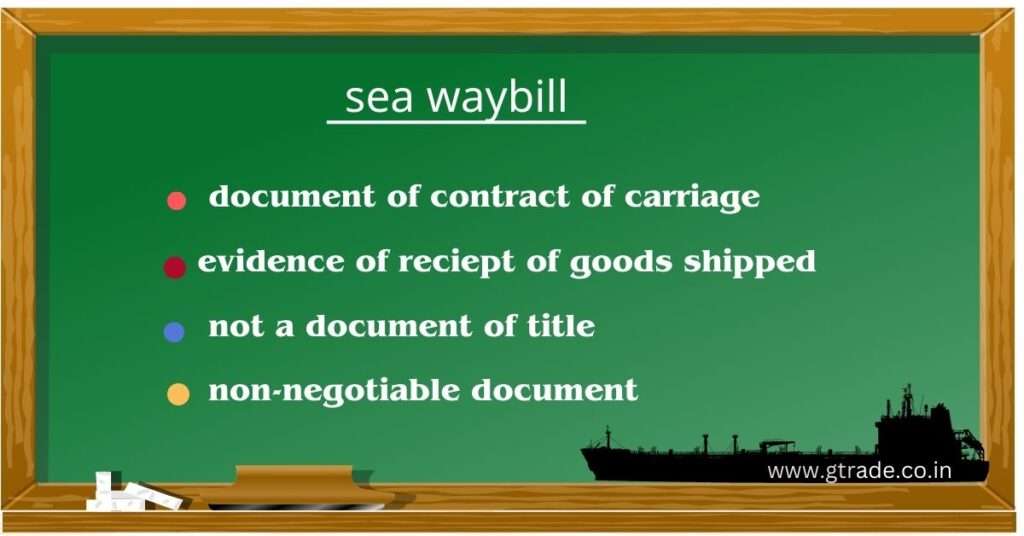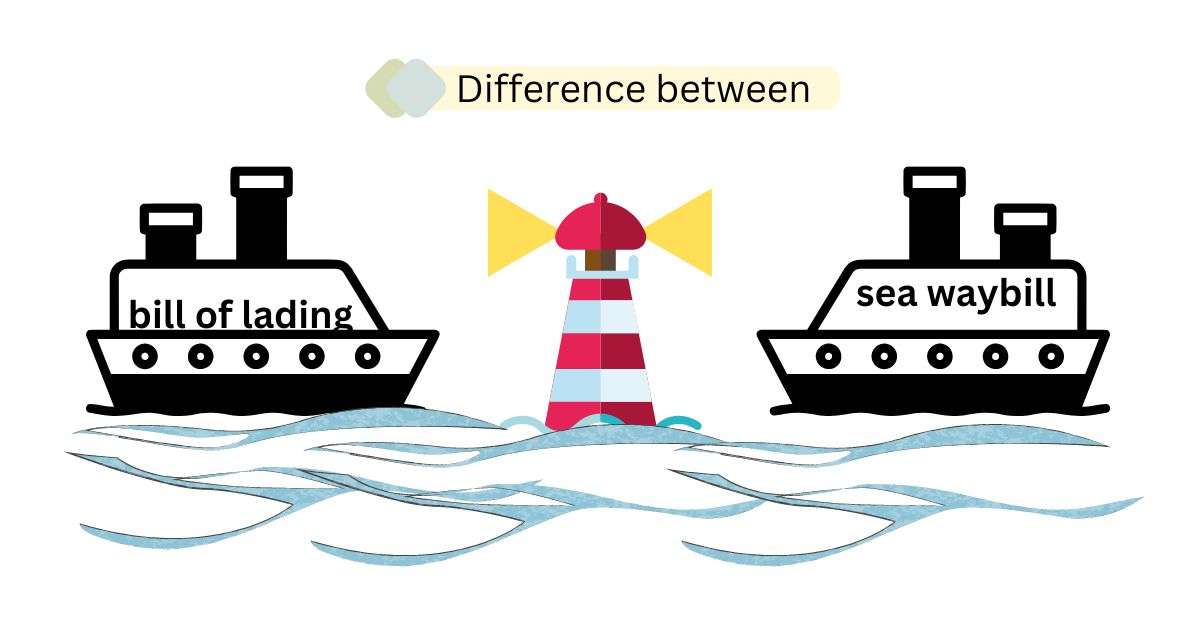In international shipments there are two legal documents that have an immense value, that need to be understood, before entering into a sales contract. Many traders, get confused with bill of lading document and sea waybill. All ocean cargo is transported based on these two documents.

common terminologies used in shipping
carrier- transportation company or shipping company,
shipper- exporter or consignor,
consignee- importer
Sea Waybill vs Bill of lading
This article tries to explain the purpose, differences, specifications, of bill of lading(BoL) and sea waybill(SWB). Traders should understand the differences between the two documents and use them effectively according to the terms of sales contract.
what is Bill of lading -BOL?
BoL is a document of contract by which the ocean carrier undertakes to transport the customer’s cargo on its vessel from one point to the other.
A bill of lading(BoL) is issued by the ocean carrier to the shipper as an evidence of contract of carriage, when cargo is boarded on the shipping vessel. It is also a receipt for shipment of goods.
The BoL is a document of title and is negotiable. which means this transport document is needed for transfer of ownership of goods from the shipper to the consignee.
Original BoL document, is required to be submitted for the goods or cargo to be delivered to the consignee.
what is seaway bill of lading?
A seaway bill is also a document issued by the ocean carrier to the shipper as an evidence of contract of carriage when cargo is boarded on the vessel and is also as a receipt for shipment of goods.
Difference between bill of lading vs sea waybill:
The key difference BoL and sea waybill is that, seaway bill is not a ‘document of title. ‘
“not a document of title’ entails that the Sea Waybill is non-negotiable, or in better terms non-transferable. This means that the cargo carried on it cannot be transferred (sold) in transit, and the cargo can only be issued to a specified consignee nominated by the shipper.
Compared to the Bill of Lading, no original document is needed for cargo delivery

sea waybill features:
- It is used when the shipper takes the decision to release his control over the cargo immediately.
- The goods can be delivered to the person specified in the document.
- As no original document is needed for cargo delivery, it is suitable for transactions with high level of trust.
- It is advisable to use a Sea Waybill when the shipper knows the consignee of the cargo well.
- sea waybill is used in the event that the goods will not be sold during transportation.
- It does not have to be printed in original and is sufficient in electronic form to fulfill its functions.
- The sea waybill is suitable for shipments between related companies which do not require settlements through banks or third parties.
when to use a sea waybill?
It is advisable to use a Sea Waybill when the shipper knows the consignee of the cargo well, and if the following conditions are met:-
- shipments are done between Parent company and subsidaries.
- Cargo will not be traded/sold during transit
- Payment of goods is made under an open account. i.e payment is made for the goods up front.
- When there is a high degree of trust between the importer and exporter
- Where a negotiable transport document is not required under a letter of credit.
If the above criteria are met,using a Sea Waybill as alternative to an original B/L, because:-
- It will greatly simplify the process.
- The cost of documentation is avoided.
- The hassle of transferring the original documents is not required.
Sea waybill flow


